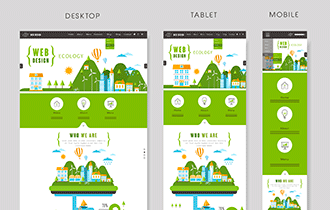Use Your Portfolio Website to Create the Best Impression!
A strong portfolio is an essential part of every Web Designer and Developer's job-hunting process. Looking at the way a portfolio has been planned and produced, you can very easily gather information about the person's ability and mindset.
Rather than a booklet format, the portfolio of a person in the Web Industry should be in the form of a website, which allows them more dynamic means of expression. This will also serves as a practical illustration of all your skills.
In this article, we will be looking at a few guidelines on creating an effective portfolio. Please keep in mind that there is no standard set of rules on how to make a portfolio, so feel free to be creative with your approach!

The IT Industry Guide is a collection of articles and resources by Internet Academy, Japan's first learning institute specialising in the Web. Here, we introduce you to industry insights in an easy-to-understand manner.
Table of contents
Make a draft of the content

First plan the components that you will be making. Rather than just jumping into the development, deciding on the contents first will allow you to produce the site more smoothly. If you find that you have too much content, try to convey only the essential information, making sure that you do not overburden the reader.
Also, before you start, try to do some reasearch! Look at other websites for inspiration - this may give you ideas on how to plan your layout, colour scheme and content categories.
Showcase your track-record

In your portfolio site, displaying a list of projects that you have worked on in the past helps recruiters better understand what you are capable of. If you can showcase the kind of projects you worked on, it will be very easy for potential employers to understand your approach and the level of your skills.
But this is not enough! It is important to also include the following information :
Try to imagine the information that recruiters might want to know, and create the content accordingly. Keep in mind that recruiters might be checking a large number of portfolios at the same time. So, try to put together an easy-to-understand, but impressive portfolio, with all the necessary key points. If they are able to understand you at a glance, your chances will be much higher.
Additionally, when posting a record of your past projects, it is important to showcase sites from a variety of genres. From corporate sites, to sites for general users - this highlights the range of your skills.
Layout of the site

Once you have outlined the contents that need to be posted, consider the layout of the website. Try to look at resume sites of other designers, or imagine what would appeal to you as a recruiter if you were trying to hire a person for a particular job role. When thinking of the layout, in addition to beauty and functionality, focus on readability as well.
After the layout and design of the website is complete, proceed to the coding. Once done, please be sure to check if it displays correctly across different operating systems and browsers. If you haven't found any issues, upload it to a server of your choice. You now have a portfolio website!
If you want to make the viewing of your portfolio private, it is also possible to set up a basic authentication check. Only those with an authorised ID and password will be able to access your site.
Additionally, it is a good idea to still maintain a booklet of your portfolio that you can carry with you, once you are invited to an interview.
In conclusion
In this article, we introduced an example flow of how to make a portfolio website. Even though we first focused on the content and then the layout, some people might be more comfortable first deciding the layout and then the content. Please adapt this guide to suit your style of working and start building your portfolio!
-
Web Design
CoursesDesign graphics
& websitesLearn design
tools & techniques -
Web Programming
CoursesDevelop dynamic
websitesLearn the
latest technologies -
Web Marketing
CoursesMarket your
businessLearn to reach
a wider audience
